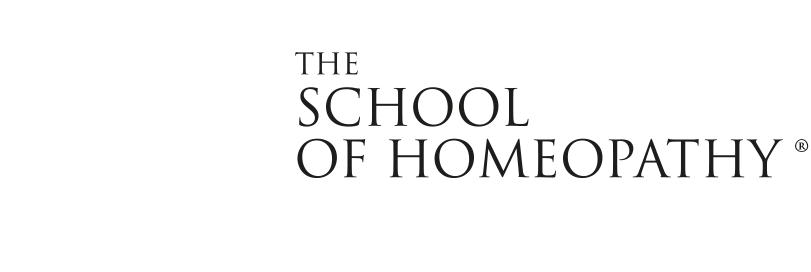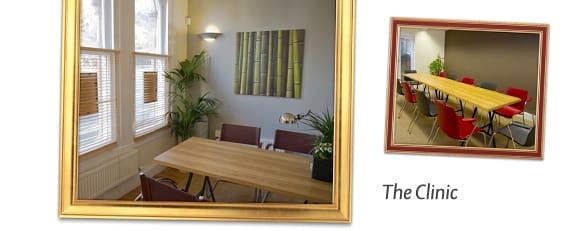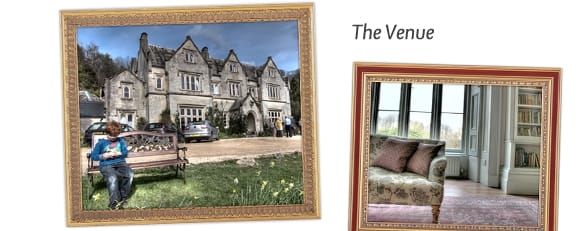

Homeopathy
Foundation
Course Content
Hahnemann and some background history of homeopathy; the law of similars; the science of homeopathic provings; the organisation of materia medica; homeopathic pharmacy; symbolic as well as medical interpretation of illness; the vital force and the vitalistic view of life; some exploration of the interactions of psyche and soma, plus: Hering's Law; recognising signs and symptoms; how to take the acute and the chronic case; knowing when to be receptive and when to be proactive and which questions to ask; perceiving what needs to be cured; symbolic as well as medical interpretations of illness; hierarchies of symptoms and evaluation of their relative importance; acute, chronic and iatrogenic diseases; susceptibility; the doctrine of polarity; homeopathic repertory; how to understand and find rubrics. Underpinning the study of materia medica is an exploration of remedy signatures.
Remedies Studied
Aconite, Arnica, Argentum Nit, Arnica, Arsenicum Alb, Aurum, Baryta Carb, Belladonna, Bryonia, Calendula, Calcarea Carb, Carbo Veg, Causticum, Chamomilla, Eupatorium, Ferrum Phos, Gelsemium, Ignatia, Ipecachuana, Lachesis, Lycopodium, Medorrhinum, Mercurius, Natrum Mur, Nux Vomica, Phosphoric Acid, Phosphorus, Pulsatilla, Rhus Tox, Sepia, Silica, Staphisagria, Sulphur, Tuberculinum.
Cases Studied
Samantha – assignment case
Mercury – example case
Eva – example case
Amanda – assignment case
Bill – assignment case
Samantha – analysis case
Anastasia – assignment case
Mary – example case
Bill – analysis case
Amanda – analysis case
Malcolm – assignment case
Malcolm – analysis case
Anastasia – analysis case
Full detail of each month is given below, with the aims and learning outcomes
Unit One : Introduction to Homeopathy
Aims
The unit aims to introduce you to the homeopathic concept of health and disease and the fundamental principles that underpin the practice of homeopathy, as described by Samuel Hahnemann in his Organon of Medicine. From the first proving through to present day practice you will see how homeopathic principles have been developed. In addition, you will also be introduced to the basic tools of homeopathic practitioners, the materia medica and repertory. The study of homeopathic materia medica will be explored, how it is presented in literature and, in particular, to the uses of five major homeopathic remedies.
Learning Outcomes
At the end of this unit you will be able to:
- Discuss the historical evolution of homeopathic principles
- Compare and contrast homeopathic concepts of health and disease with allopathic medicine
- Outline the philosophical principles upon which the practice of homeopathy is based
- Discuss the language used in homeopathic materia medica and access information about remedies from a range of homeopathic materia medica sources
- Identify the pictures and usage of five major homeopathic remedies
- Explain the language of Kent’s Repertory and clarify situations in which specific rubrics would be used
Unit Two : Provings, Pharmacy & Potentisation
Aims
This unit aims to introduce you to the process of proving remedies, the source of information about homeopathic medicines and the vital work of Samuel Hahnemann in undertaking his first proving. You will also be shown the methods of homeopathic pharmacy, from the concept of potentisation to the actual process of manufacturing remedies, and see why this method is used. The study of homeopathic materia medica will be further explored, how it is presented in literature, and in particular to the uses of four more homeopathic remedies. In addition you will also be studying the repertory in further detail.
Learning Outcomes
At the end of this unit you will be able to:
- Explain the purpose and process of homeopathic provings
- Discuss the pharmacy and manufacture of homeopathic remedies
- Define the concept and the purpose of potentisation
- Identify key themes and symptoms of four homeopathic remedies
- Describe the symptoms of a remedy in relation to its themes from Kent’s Repertory
- Explain the language of Kent’s Repertory and clarify situations in which specific rubrics would be used
Unit Three : Language of Disease
Aims
This unit aims to introduce you to the concept of symptom classification in homeopathy and the language of signs and symptoms in disease. You will be shown how to observe the language of symptoms and how they can be used to find a remedy that has the potential to improve the health of a patient. You will also learn the structure and organisation of the repertory and study how to translate patient narrative into the language of the repertory. Through the grading of symptoms and the grading of remedies you will explore the building blocks of repertorisation. In addition, you will continue your study of materia medica, paying attention to the polarities within remedies, and study six more prominent homeopathic remedies.
Learning Outcomes
At the end of this unit you will be able to:
- Identify ‘individualising’ symptoms which characterise the patient
- Compare and contrast the different kinds of symptoms in a patient
- Describe the mechanisms of homeostasis and action and reaction in relation to homeopathic healing
- Describe maintaining factors and causes in relation to homeopathic healing
- Identify the key themes and polarities of six major homeopathic remedies
- Translate the language used by the patient into the language of the repertory
- Outline the grading of symptoms and remedies and explain their significance
- Perform a simple repertorisation
Unit Four : Direction of Cure
Aims
This unit aims to explain how disease manifests symptoms at different levels within the body and how healing can be observed through Constantine Hering’s concept of ‘Direction of Cure’. The direction of cure will be examined from a historical perspective through the development of Constantine Hering’s theory, as well as present day understanding and usage. You will also study the materia medica in greater depth, with the study of four more prominent remedies, and be introduced to the significance of ‘delusions’ in homeopathic case taking and analysis. In addition, you will be asked to apply your knowledge by looking at an acute case.
Learning Outcomes
At the end of this unit you will be able to:
- Explain the individual stages of the Direction of Cure
- Describe the relative importance of different kinds of symptoms in a case
- Illustrate the central state and usage of three homeopathic remedies
- Identify the importance of the totality of symptoms in order to form a remedy picture
- Analyse an acute case and apply that knowledge in order to find an appropriate remedy
Unit Five : Taking the Case
Aims
This unit aims to introduce you to the importance of a carefully taken or ‘received’ case. From the differences between the homeopathic and allopathic consultation, the role of the ‘unprejudiced’ observer through to recording the patient’s notes correctly, you will learn the process of homeopathic case taking. In addition, you will have the opportunity to deepen your study of the language of Kent’s repertory and how to differentiate between remedies that appear within the same rubric. You will continue your study of materia medica with three more key remedies. You will also continue your study of case material and the process of accurately matching a remedy to a patient.
Learning Outcomes
At the end of this unit you will be able to:
- Critically review the difficulties that arise in the case-receiving process
- Discuss the do’s and don’ts of case-taking
- Identify individualising factors which characterise the patient
- Identify modalities of homeopathic remedies
- Compare and differentiate between the mental, emotional and physical states of different homeopathic remedies
Unit Six : Evaluation of Symptoms
Aims
This unit aims to introduce you to the importance of evaluating a patient’s symptoms and how they relate to the totality of the case. You will study strange, rare and peculiar symptoms and be shown how to separate the common from the characteristic symptoms. In particular you will cover Kent’s approach to this part of the case analysis process; Boenninghausen’s view on striking and singular symptoms; and how to list symptoms in keeping with a particular hierarchy. In addition, you will study a further six homeopathic remedies and continue on with your analysis of patient cases.
Learning Outcomes
At the end of this unit you will be able to:
- Describe the meanings of different types of patient symptoms
- Explain the position of symptoms in the symptom hierarchy
- Outline Kent’s and Boenninghausen’s advice on evaluating symptoms
- Illustrate the key symptoms of certain homeopathic remedies
- Select rubrics pertaining to a remedy
- Analyse case findings, identify the characteristic signs and symptoms and construct a hierarchy of symptoms
Unit Seven : Susceptibility
Aims
This unit aims to familiarise you with the concept of susceptibility and the role it plays in relation to health and disease. You will study ideas about an organism’s susceptibility, ranging from constitutional weakness, through to family, racial and medicinal susceptibility. You will also be informed about the difference between acute, chronic and iatrogenic disease, how to analyse and reflect upon a case example in greater depth and also take an in-depth look at three more homeopathic remedies.
Learning Outcomes
At the end of this unit you will be able to:
- Outline the factors involved in suppression and how homeopathic treatment might expose this in a patient
- Relate the concept of suppression to direction of cure and homeopathic aggravations
- Differentiate between how homeopathy can be used to address acute and chronic conditions
- Discuss the factors to which an organism may be susceptible
- Identify the key themes and symptoms of three homeopathic remedies
- Analyse, repertorise and differentiate between remedies for a case and reflect upon the process

Homeopathy has changed my life, opened my eyes and healed me and those around me who have used it. The homeopathy course is life changing and I would recommend it to anybody who is looking for a greater understanding in life.
Rachel Melbourne, Graduate















